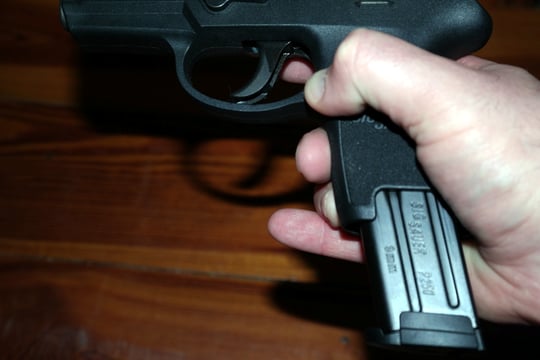Slim-line conceal-ability or fight sustainability? That’s a question many concealed carriers have to ask themselves when selecting their concealed carry firearm. Which one is best all depends on several factors including:
1. Clothing Choice
For lighter layers (and warmer weather), using a single stack concealed carry firearm can blend smoothly with a carrier’s waistline. When the weather gets cooler and jackets are now encouraged, bulkier pistols can be more easily concealed on the person.
2. Activity Level
Compact, Sub Compact, Micro? Concealed carry weapons can sometimes be like clothing choices – dressing appropriately for the occasion pays off. For athletic events, sometimes a micro compact .380 Auto or .32 can be advantageous. For wilderness excursions, a lot of concealed carriers can get away with a compact or full size pistol or revolver.
3. Magazine Capacity
For those living in states where magazines are restricted, the single stack or double stack debate begins to lose a lot of meaning quickly. But for those who live in unrestricted magazine states, a double stack can be the difference of doubling the number of bullets in their magazine.
Case In Point: Glock 26 vs. Glock 43
Take, for instance, the Glock 26 and Glock 43. Both are chambered in 9mm. The double-stack “Baby Glock” has magazines capable of carrying between 10 to 15 rounds (state restrictions apply) while the single-stack Glock 43 maxes out at 6 rounds in the magazine. Which one has fight sustainability?
Q: Sorry to interrupt, but what’s ‘fight sustainability‘?
A: It’s the ability to continually engage a target over time versus relying on immediate suppression.
So, Which Performs Better – Single Stack Or Double Stack?
When concealed carriers are selecting their daily carry firearm, a big consideration should be what fits comfortably in the hand. While a lot of people with smaller hands may prefer a double stack due to capacity, it may be a better decision to go with a single stack that fits comfortably.
Instinctive, natural shooting styles are generally more effective for fast response times. If a person has to struggle to maintain grip around a double stack magazine well – he or she may want to consider a slimmer gun.
Conversely, plenty of people with large hands prefer the grip and feel of a 1911 – even though that’s a single stack pistol with a reduced capacity in comparison to striker-fired Springfield XDs or Sig Sauers.
The bottom line is that if you – the concealed carrier – have a preference for a model of firearm, you can always spend more time training to adjust. It’s better to go with a form factor that suits the needs of you, your environment, and your activity level than to simply go with magazine capacity alone.
Is Magazine Capacity Important For The Concealed Carrier?
Yes and no. Obviously, you want to have as many rounds available as possible to suppress an active threat to your life and that of your family or property. That said, whether you go with a single stack or double stack – consider bringing additional magazines.
Throwing just two additional magazines triples your ability to sustain in a fight. Whether it’s in a cargo pocket or a glove box, those magazines can extend the life of your firearm’s operation in a hostile situation.
More importantly, it means that if you need to switch to a more compact firearm, you’re not reducing your output capacity in a dangerous situation.
Ultimately, single stack or double stack can be negated with bringing additional magazines. It’s a good idea no matter which way you go and guarantees you are ready no matter the situation.
What magazine style do you find works best with your daily schedule? Tell us about it in the comments section below.














![[BREAKING] PA Mom Shaneen Allen, Arrested For Bringing Firearm Over State Lines, Avoids Jail Time](https://imagedelivery.net/sbm_lYeJbALkepJgtmRD5w/concealednation.org/2014/09/ShaneenAllen.jpg/w=728,h=381)